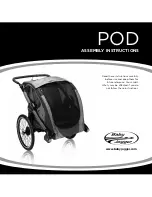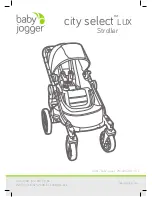
User Manual
BC4000 Series RAID Controllers
02/13/06
B ro ad c om C o r p or at i on
Document
BC4000-UM100-R
Flexibility and Expansion Considerations
Page 5
F
LEXIBILITY
AND
E
XPANSION
C
ONSIDERATIONS
Before configuring an array, consider the following points to enhance the flexibility of your RAID system.
M
ULTIPLE
T
YPES
Most RAID controllers do not allow you to change a chosen array type, create more than one type of array for
each controller, or to create more than one array per physical disk. With the BC4000 Series RAID controller,
you can create different types of arrays on the same disk to adapt each array to the I/O that it processes.
Furthermore, depending on the array capacity and redundancy level, you can then transform an existing array
to another RAID type if the type of array you are using is not the optimal type for your application. You can also
build different arrays with different characteristics for different applications.
F
UTURE
E
XPANSION
When creating arrays, consider whether you will need to expand your disk capacity in the future. If you
anticipate the need to expand a file system:
•
On Windows, format your arrays with NTFS. Microsoft provides a utility (diskpart.exe) that will dynamically
extend an NTFS file system onto any unused adjacent space. Note also that using a single partition per
array will make expansion much easier. The
diskpart.exe utility version you need depends on which
version of Windows you are running. The diskpart.exe utility can be found on the CD for some versions of
Windows or on the Microsoft website (www.microsoft.com) for others. Use the correct version for your
operating system.
•
On Linux operating systems, be sure to use an expandable file system. Because the BC4000 Series
RAID controller is limited to eight arrays, if you need a large number of logical volumes, you may want to
use a logical volume manager, such as LVM.
O
PERATING
S
YSTEM
C
ONSIDERATIONS
One final and important array planning consideration is whether to extend the RAID benefits to your system
disk and operating system, as well as to your data disks. For example, if you install the operating system on a
RAID1 array (mirror), split the array into two volumes and then hide one of the resulting volumes, you can easily
recover your operating system should your system disk fail. Alternatively, you can improve operating system
performance by installing the OS on a RAID10 array and then splitting it and hiding one of the RAID0 arrays
(like a hot spare).
To install the operating system on an array and then boot from that array, see
“Initializing Disks from the BIOS”
on page 51
.
















































